Plastic, rubber, concrete, fabrics – materials are everywhere! Everything we use in daily life, from the homes we live in to the clothes we wear, has been made from one material, or a combination of them. Look around you! How many different kinds of materials can you spot?
Materials come from nature or are made artificially. Natural materials can be divided into those that come from living plants and animals, like trees or sheep wool, or those from non-living things, like sand or metals. At the V&A, there are entire galleries focused just on materials, such as the Ceramics or Metalwork Galleries. Can you tell which materials were used to make the objects below? Think carefully! Some might be tricky to guess!
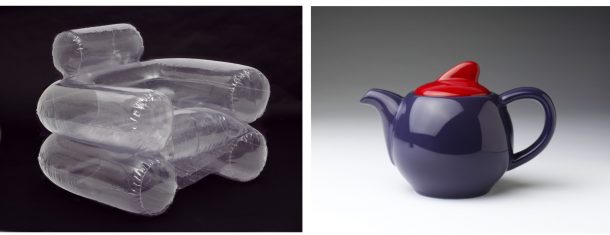
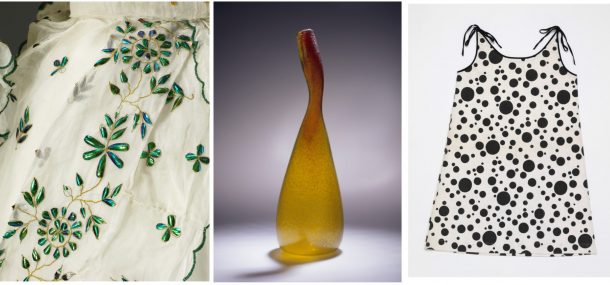
The inflatable chair is made out of compressed air and PVC, a common type of plastic. The teapot is made with clay – a type of fine-grained soil. The piece of cloth on the left seems to be adorned with green and blue gems. But don’t let your eyes deceive you! The gems are in fact tiny beetle wings! Can you imagine how many beetles would be needed to decorate a whole dress? The yellow vase is made from glass – a mixture of natural materials like sand and limestone. Finally, who would guess that the dotty dress is made of wearable paper? How many materials did you guess correctly?
We use our senses to learn about the properties of materials. Materials can feel soft or hard, bendable or stiff, rough or smooth. They might look shiny or be brightly coloured. Some can have a smell too – like wood or soil. When we tap on them, they may make a specific sound. Try tapping on a glass object and one made of plastic and hear the difference! For designers, understanding a material’s properties is very important when designing an object.
A material that has not yet been changed is called a raw material. This might be logs, cotton plants or even air. Watch the video to find out how soil, a raw material, is processed to make the famous Brown Betty Teapot.
Let’s learn about the circular economy!
Some natural materials may run out in the future, so they must be used carefully and replaced wherever possible to be sustainable. A design that doesn’t damage our planet but helps to protect it is called a ‘sustainable design’.
Designers will often think about how their design can last for as long as possible and not become just a piece of rubbish after it’s used.
Some designers come up with clever solutions about how to give things another life. Have a good look at this chair made by designer Jane Atfield. Do you think it has been painted? It is actually made entirely of recycled plastic bottles that once contained shampoo. When an object is re-used instead of being thrown away, it becomes a part of the ‘circular economy’.
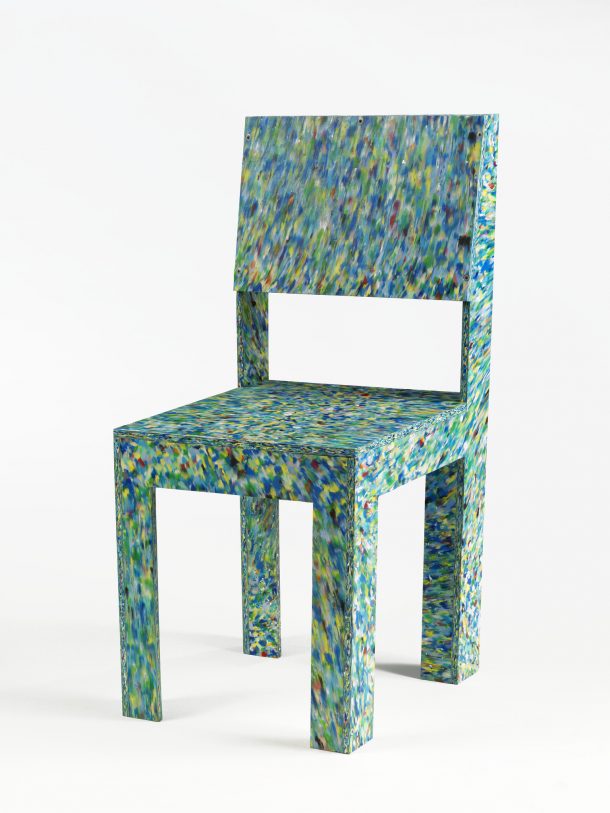
Let’s design a plantable card from recycled paper!
Paper is made from trees and is often cheap to buy. We throw away a lot of paper. This is bad for our planet and trees. The good news is that paper can be recycled and used over and over again! Let’s turn old paper into new!
You will need:
- old newspapers, magazines or cartridge paper
- water
- mesh fabric or old nylon stockings – to act like a sieve
- embroidery hoop
- flower seeds
- blender (only use with an adult supervision)
- old cloth or towel
- coloured paper (optional)
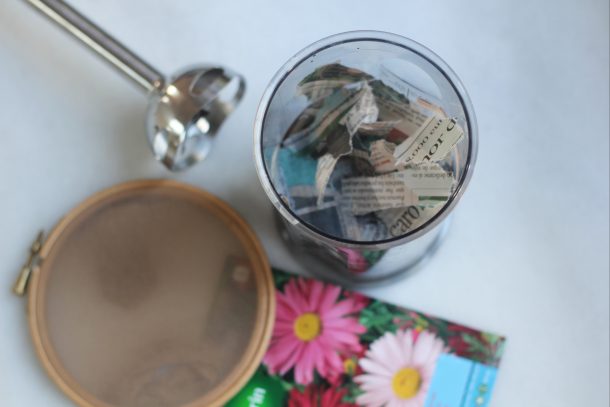
To make recycled paper:
- Tear old paper into tiny pieces (around 2 x 2 cm). You will need about two cups of paper pieces. The colour of your recycled paper will depend on the colour of the paper you use.
- Put the paper pieces into a blender and cover them with water. Make sure you have an adult to assist you with this step.
- Blend your paper and water mix into a pulp. Add more water into the mixture if needed, so that your pulp is quite fine. Once blended, mix in your flower seeds.
- Now prepare your hand-made sieve to sift the paper pulp. You can do this by clipping some stretched nylon tights or mesh fabric into an embroidery hoop. Or if your sieve is fine enough, use a kitchen sieve.
- Make sure you do this step over a sink or a bowl – pour your blended paper pulp into your sieve. You can use a spoon to spread it on evenly to make sure most of the water comes out. Then let your mixture rest for about 30 minutes.
- After 30 minutes, press an old cloth or a towel onto your paper mixture so it absorbs any remaining water. You can also use a rolling pin to get rid of more water. Then put your paper sheet aside until it is completely dry.
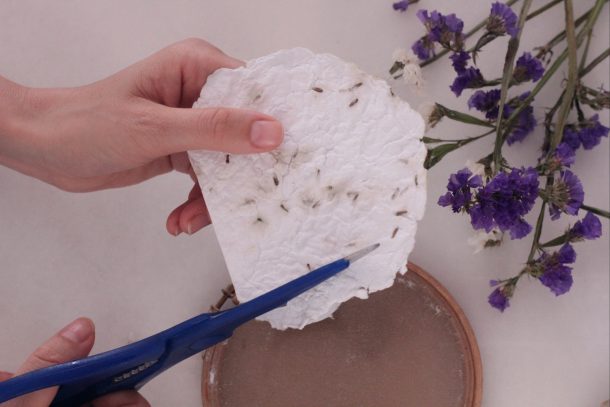
Well done, you have made your own recycled paper! You can cut your paper sheet into a shape you like to make a card. The card can be planted after it’s read to bring extra joy and reduce waste. Paper will degrade in soil and your seeds will grow into flowers!
Let’s waste less!
When materials are very fragile or get old, they break or wear out. But that doesn’t mean we have to throw them away! Artist Bridget Harvey uses mending and darning of broken things to make her art. She repairs many different types of materials, like broken ceramic pots, broken toys or clothes with holes in it.
Bridget is also an activist – she wants to bring a positive change through her work. Like this jumper she made that says ‘Mend more, bin less’ which was exhibited in the V&A’s Fashioned from Nature exhibition. Do you agree with what the jumper says? Does it inspire you? How could you repair old clothes and waste less material?
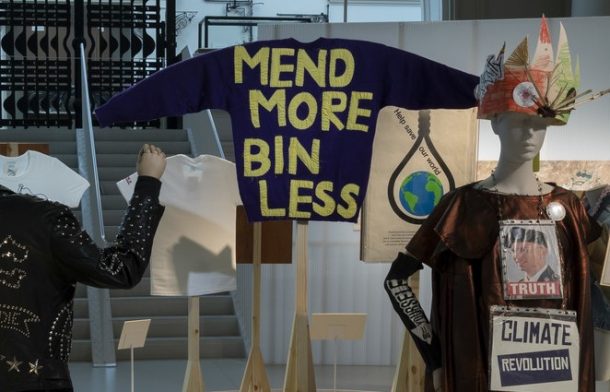
Share your creations using #Let’sMakeWednesdays and #VamFamilies.


